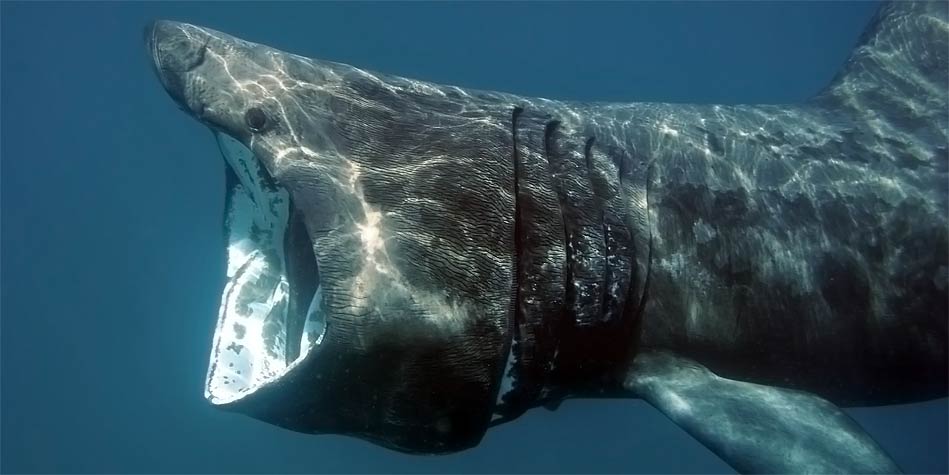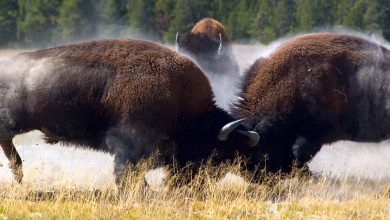Basking shark (Cetorhinus maximus)
The basking shark is the second largest fish in the world – right after the whale shark. Despite its size and membership of sharks, it is very mild, feeds mainly on plankton and small fish. It can be often observed on the surface of the water, hence its English name.
Classification
- Class: Chondrichthyes
- Family: Cetorhinidae
- Genus: Cetorhinus
- Species: basking shark (Cetorhinus maximus)
- Names: Basking shark, bone shark, elephant shark, hoe-mother, homer, sail-fish, sun-fish.
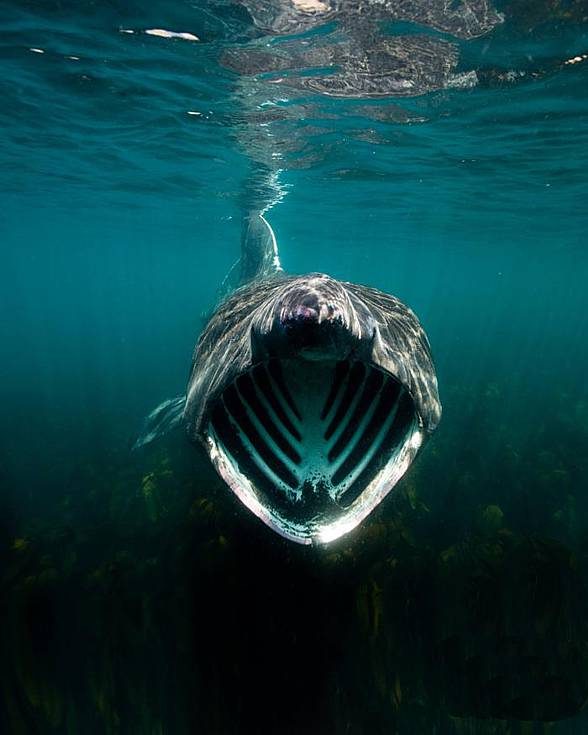
Occurrence and natural environment
The basking shark is a cosmopolitan species that can be found almost all over the world. It prefers temperate and warm waters, of 8-14 °C (46 – 58 °F), but it has been recently seen in much warmer waters near the equator.
The sharks of this species can be often found near land. Usually, they swim in quite shallow waters, but they also occur at the depth of 910 meters (2,990 ft).
Migration is characteristic for this species, as well as for the tiger shark and hammerhead shark – the sharks migrate to warmer waters in winter.
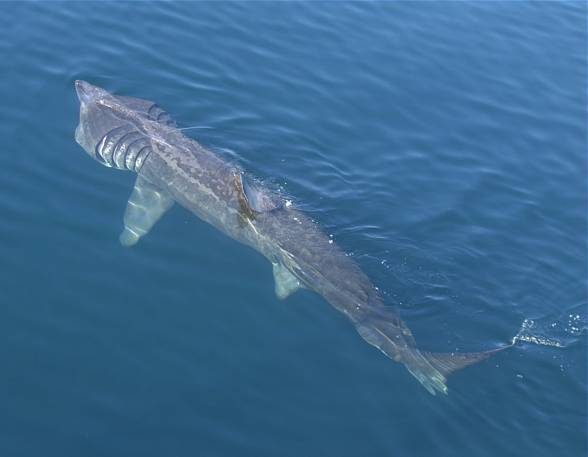
Characteristic features
The body of the basking shark is typical for sharks – it is long, spindle-shaped and massive, therefore, it can be easily mistaken for the great white shark. The enormous mouth is a feature that differentiates the basking shark from the great white shark – it opens even up to one meter wide. The gill arches have special, 10-14-centimeter-long (4-5.5 in) gill rakers – a thousand on each arch. Their function is to filter plankton.
The snout of the basking shark is quite short, and the mouth has 4 to 9 rows of small hooked teeth, that are indeed only 5-9 millimeters long, but there are 3 thousand of them.
The fins of the basking shark are similar to those of other shark species – the dorsal fin is triangular, the pectoral fins are straight, and the tail fin is crescent-shaped.
The coloration of basking sharks varies and most likely depends on the conditions of observation of the shark and the condition of particular individuals. Mostly, they are dark brown or dark gray on the back, and lighter on the belly, but some individuals are completely dark.
The size of the basking shark’s liver is extraordinary – it constitutes 20 to 25% of the whole body weight, and stretches across the whole abdominal cavity. It is said that the liver plays an important role in the regulation of buoyancy, and long-term storage of energy. It contains 60% of fat, which enables the basking shark to stay afloat.
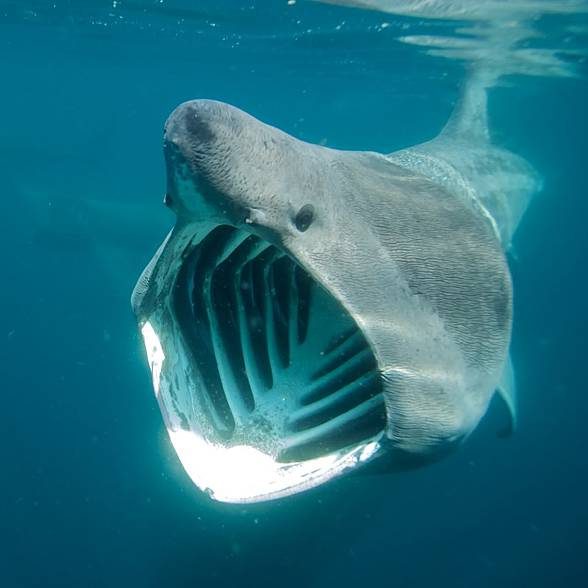
Diet
Despite its large size, the basking shark is not an active predator. It feeds mostly on plankton, and it obtains its food by filtering water with its long gill slits. It can filter even 1,800 tons of water per hour.
Migration
Satellite observations confirmed that the sharks can migrate over very long distances – in winter months even thousands of kilometers towards the equator, searching for plankton blooms. The migration of the basking shark may be associated not only with obtaining food, but also with reproduction.
Basking sharks move very slowly. Usually, their speed does not exceed 3.7 km per hour (2.3 mph). Nevertheless, they can swim much faster, and even completely jump out of the water. The purpose of such behavior is currently difficult to determine. Researchers suspect that it enables the sharks to get rid of parasites feeding on their bodies.
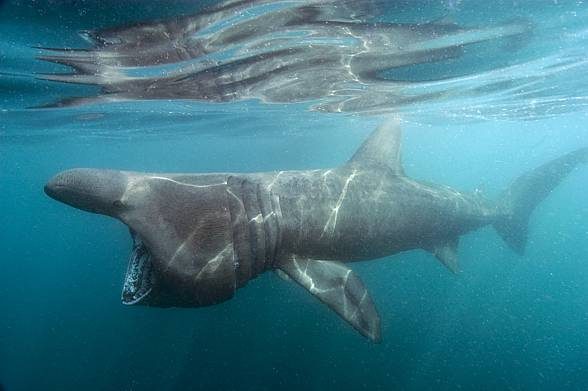
Social behaviors
Basking sharks are quite social. They form groups called “schools” whose members are segregated in terms of their sex. Usually, they consist of several individuals, but they may even be formed by 100 sharks.
Adult basking sharks swim in pairs or alone.
Reproduction and development
Basking sharks are ovoviviparous. However, little has been learned about the details of their reproduction. It is likely that females have only one ovary active – the right one. Gestation may last from one to three years, and the young, usually 1 or 2, are born fully developed and are 1.5-2 meters (4 ft 11 in–6 ft 7 in) long.
Basking sharks become sexually mature at the age of 2 to 4 years. Mating occurs at the beginning of summer, and the female gives birth in shallow waters.
The exact lifespan of the basking shark is unknown, but researchers have estimated that it can reach even 50 years.
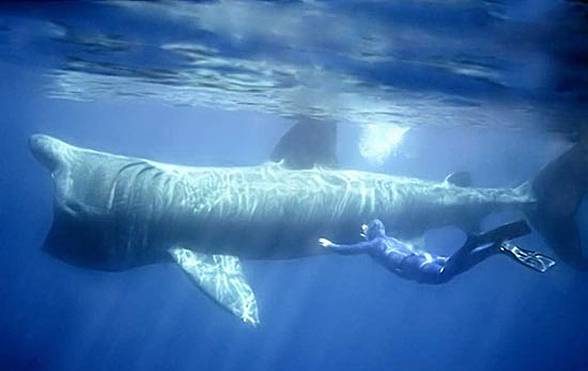
Natural enemies
Because of its size, the basking shark has few natural enemies – the killer whale is one of them. Great white sharks have also been observed while feeding on the remains of basking sharks.
Basking sharks and people
In the past, basking sharks were often fished by fishermen – mostly because of their slow swimming and unaggressive behavior. The sharks have many commercial uses – they are fished for their meat, the liver oil containing many valuable acids and vitamins, and their fins. In Japan, parts such as cartilages are regarded as an aphrodisiac.
Because of the drop in the population, the basking shark has been under protection in some parts of the world, such as Great Britain, Malta, and New Zealand.
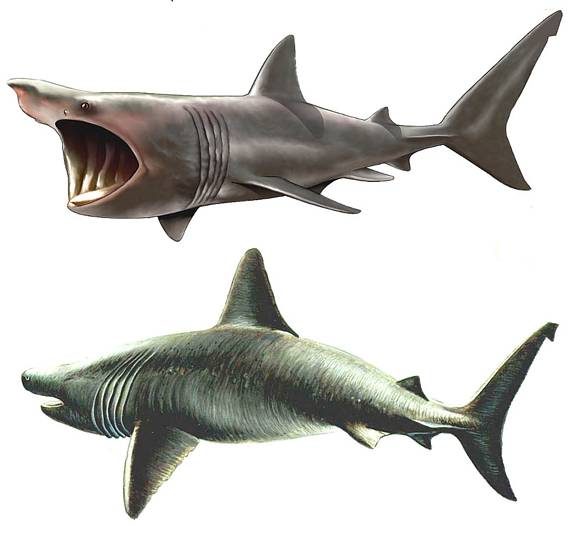
Detailed information / size
Basking shark (Cetorhinus maximus)
- Body length: from 6 to 8 meters (20–26 ft), confirmed record – 12.27 m (40ft 3in), unconfirmed – 13.7 m (44ft 11in)
- Weight: average – around 5.2 tons (record 19 tons)
- Young after birth: 1.5-2 m (4 ft 11 in–6 ft 7 in)
- Lifespan: about 50 years.
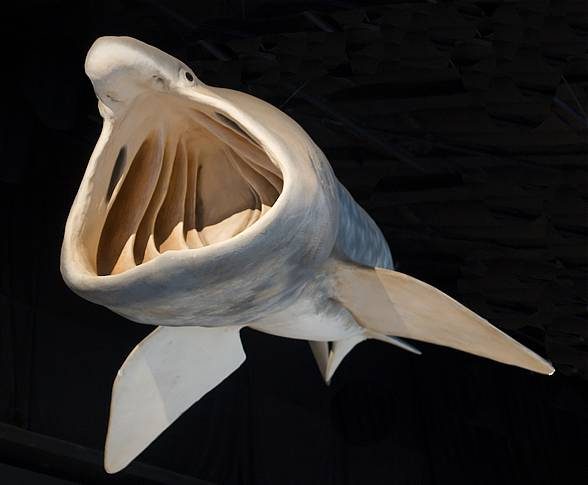
Basking shark – interesting facts
- Studies conducted in 2003 showed that basking sharks do not hibernate but are active throughout the year. In winter they swim even 900 meters (3,000 ft) deep to feed on plankton.
- Despite their large size, basking sharks are very gentle and they are usually non-threatening for humans, unless they are provoked to attack. It happens that they swim close to boats and divers without harming them.
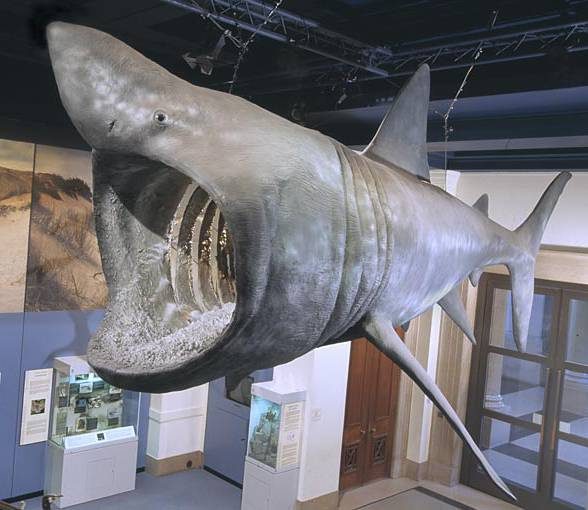
Recommended
- Marine
- Sharks – myths and facts
- Sharks – killers from the depths
- Great white shark
- Megalodon
- Whale shark – largest fish
- Greenland shark
- Hammerhead shark
- Longest whales
- Heaviest whales
- Largest sharks
- Extinct animals
- Animal fights
- American lion
- European cave lion
- Smilodon – Saber-toothed tiger
- Fastest animals
- Fastest birds

